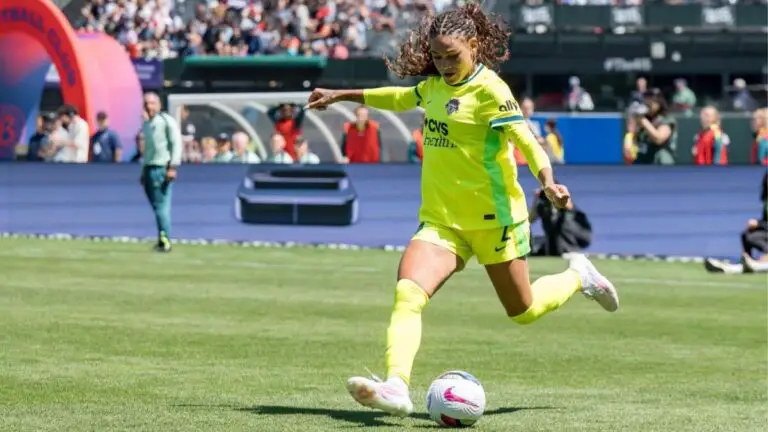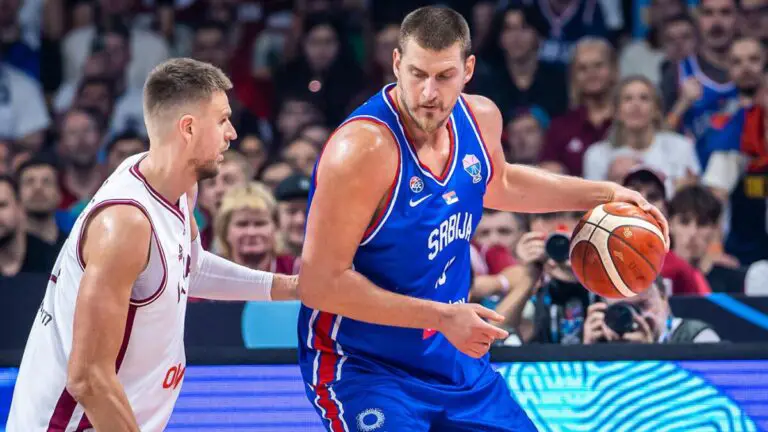
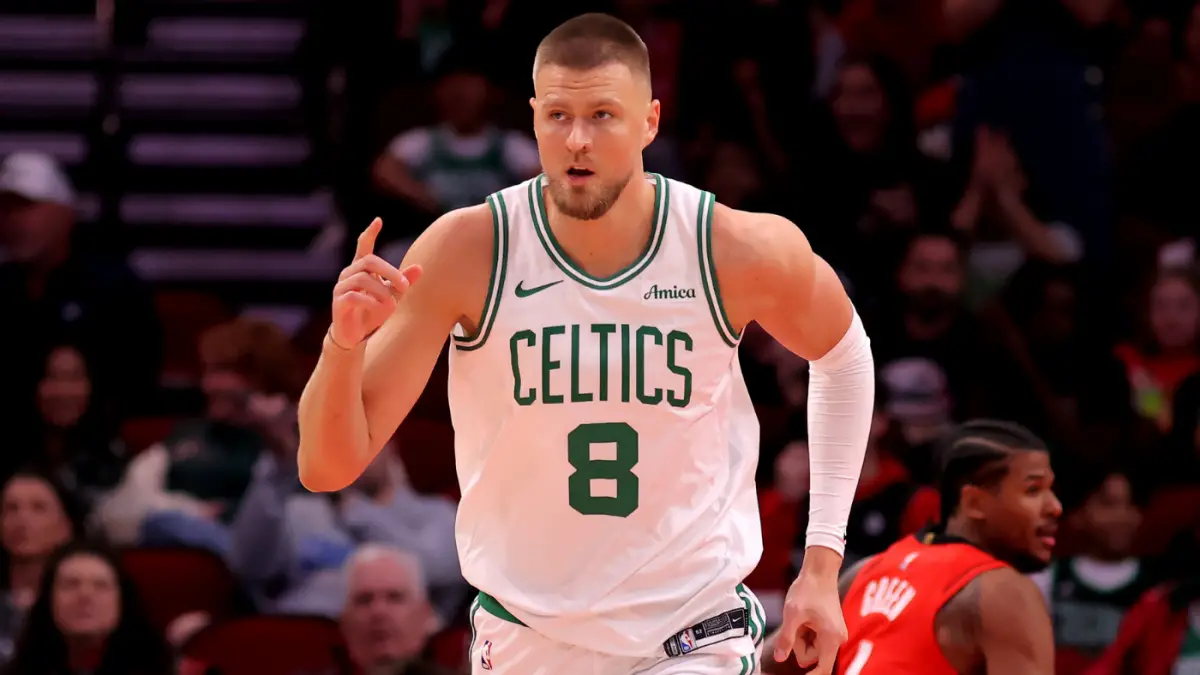
NBA offseason grades for every East team: One team aces summer, Celtics, Knicks in ‘B’ tier, Bulls confuse
NBA offseason grades for every East team: One team aces summer, Celtics, Knicks in ‘B’ tier, Bulls confuse
The reigning Eastern Conference champion Indiana Pacers lost their best player, Tyrese Haliburton, to a torn Achilles during the 2025 postseason. The 2024 NBA champion Boston Celtics lost their best player, Jayson Tatum, to a torn Achilles during the 2025 postseason. The last Eastern Conference team to win a championship before the Celtics, the Milwaukee Bucks, lost their second-best player, Damian Lillard, to a torn Achilles during the 2025 postseason.
One ligament has practically upended half of the NBA. The Pacers and Celtics are presumably out of the 2026 championship hunt, or at the very least, will be without their best players for so much of the regular season that they’ll be fighting an uphill battle from a lower seed just to make the playoffs. The Bucks took a different route. They viewed Lillard’s injury as so significant to their short- and long-term prospects that they waived him to create the cap space to sign Myles Turner, putting more than $22 million in dead money on their books in order to do so. Maybe their 2025-26 prospects are brighter than Boston’s or Indiana’s, but their long-term outlook comes with all sorts of question marks.
As for everyone else? Well, suffice it to say there is a remarkable degree of opportunity here. It’s not just that the conference heavyweights are out of the picture. It’s that their out of the picture before the season even begins. Cleveland, New York, Orlando and everyone else had a full offseason to prepare for a world without the Celtics and Pacers and one in which the Bucks are on life support. There are no excuses here. These teams should all theoretically be more prepared than ever to follow that weak path to the Finals.
So… who actually is? Who aced this offseason and who wasted it? Let’s go through the Eastern Conference and grade all 15 teams on the offseasons they just just had.
Landry Fields had a complicated tenure as Atlanta’s general manager. He mismanaged assets and salaries, and it was never quite clear how much of what happened in Atlanta was him vs. Nick Ressler, the son of owner Tony Ressler. Before he was ultimately fired, though, he laid the foundation for something interesting by drafting Zaccharie Risacher and trading for Dyson Daniels. The concept was to surround Trae Young with athletes and defenders.
The front office that took over for him, led by Onsi Saleh and Bryson Graham, has taken that concept and run with it. Those athletes and defenders shared a vulnerability: shooting. So what was the first move of the offseason for Atlanta? Landing Kristaps Porziņģis, an elite shooting big man with a differing defensive skill set from incumbent starter Onyeka Okongwu. Together, they make one of the big interesting big man tandems in basketball, capable of both addressing the spacing issue and giving Atlanta a viable defense. Porziņģis comes with obvious medical risks, but Atlanta has him on an expiring deal, so there’s little risk there. Luke Kennard is also on a one-year pact, and while Nickeil Alexander-Walker got four years, it was basically for mid-level money. The shooting improved. The defense improved. And, frankly, the chemistry improved.
Kristaps Porziņģis trade grades: Celtics get ‘B+’ for avoiding second apron, Hawks take win-now swing
Sam Quinn
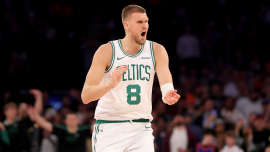
Young actively recruited Kennard and Alexander-Walker to Atlanta. That’s a far cry from the reports in February that his future was the team was becoming “murky.” This is a franchise player that seems engaged with what his team is doing, and since he’s extension-eligible, that couldn’t come at a better time. The Hawks are nailing the build around him, and it’s setting them up to have their best roster of his career.
And we haven’t even gotten to their best move yet. Are the Hawks true championship contenders yet? Probably not. But on draft night, they made the move that might one day get them there. In moving down from No. 13 to No. 23, Atlanta acquired what might be one of the most valuable draft picks that has ever been traded: an unprotected 2026 pick from the Pelicans that comes with the right to swap picks with the Bucks. The Pelicans just had the NBA‘s fourth-worst record. The Bucks are living in constant fear of a Giannis Antetokounmpo trade request. There is a real chance that the pick Atlanta got in that deal is No. 1 overall next June, or at least falls somewhere in a top-three that includes three No. 1 overall pick-caliber prospects in AJ Dybantsa, Darryn Peterson and Cameron Boozer. The Hawks got better in the short term, yes, but they may have changed their future completely. This was a downright flawless offseason from one of the league’s most promising new front offices.
Celtics: B+
How Brad Stevens managed to get off of the three years and $104.4 million left on the 35-year-old Jrue Holiday’s contract following his worst season in years without sacrificing draft picks, I will never understand. That deal was an overtly negative asset, and Stevens was able to not only get rid of it, but use it as a chance to get a look at a valuable young offensive player in Anfernee Simons. It’s a no-risk, all-reward trade. If Simons works out, great, they’ve gotten him for a player they needed to move anyway. If he doesn’t? They either flip him at the deadline or let him walk for nothing as an expiring contract. The goal here was to dump a contract, and they did so.
The Porziņģis trade didn’t come with the same upside, but it similarly helped Boston achieve badly needed savings. The Celtics had to get under the second apron and they did so without sacrificing anything of value. That’s great work. It would have been nice if they’d found a viable, starting-level center in the process, but with a gap year coming, the Celtics have time to sort that out. They did what they needed to do financially without enduring any pain in the process. That alone is good enough for a solid grade.
Where I slightly disagree with Stevens is seemingly on what it would have taken to move another core player. Jake Fischer reported that Boston wanted a “Mikal Bridges-type” package to move Derrick White. Now, White shouldn’t have been available for cheap, but that price was unrealistic. White is four years older than Bridges was when he was moved. That’s why he makes sense as a Boston trade candidate. He’ll be 32 when Jayson Tatum presumably returns for the 2026-27 season, so cashing him in now for younger players and picks that could help a retool for the next portion of Tatum’s prime would have made sense.
Still, Stevens deserves the benefit of the doubt. That is especially true in light of the reporting of mutual interest between Boston and Damian Lillard. Nab him for the minimum for the 2026-27 season and suddenly the championship window is wide open again, and having White rather than younger players and picks is suddenly the right play. Whether the Celtics get Lillard or not, though, Stevens has performed a necessary financial reset, and his track record suggests that he’ll continue to make the right decisions to reshape this team around a post-injury Tatum over the next year.
In major trades, we too often focus on quantity of draft picks rather than quality. The Magic gave up four first-round picks and a swap for Desmond Bane, yes, but really think about those picks. One of them was No. 16 overall this year. Good, yes, but not even in the lottery. Phoenix’s pick next year is tempting yes, but its best-case outcomes belong to Washington, as the Wizards have first-dibs on swapping with the Suns. In the likelier event that the Suns are average after a strong offseason of their own, the Magic are probably giving up a late lottery pick. The rights to their own picks in 2028, 2029 and 2030? The upside there is somewhat limited. Paolo Banchero will be 28 when the last pick conveys. If you trust their young players to grow as expected, those are going to be bad picks.
The Magic paid a premium for two justifiable reasons. The first was to get out of contracts they no longer wanted. The second was a specificity tax. Orlando needed an offensive boost, yes, but most of the guards that could have provided one would have compromised their elite defense. That’s why Trae Young or Anfernee Simons or anyone of that ilk was unacceptable. They needed to check several boxes for a trade like this to make sense. The player had to be viable defensively. He had to be an elite 3-point shooter who could scale usage up or down, as the Magic are built for Banchero and Franz Wagner to handle the ball. And he also had to come with a ton of team control, as everyone else on this roster is about to get expensive and they didn’t want to have to quickly re-sign such a player to a bloated contract. Bane was the only player in the NBA who checked every box and was realistically attainable. He’ll get Orlando’s offense up to around average without costing them their top-three defense.
Desmond Bane trade grades: Magic, Grizzlies make fairly even swap as Memphis pulls in impressive return
Jasmyn Wimbish
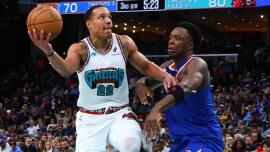
That’s the big move. The small ones matter too. Orlando simply hasn’t employed a proper point guard in years. Tyus Jones fixes that. They got Moe Wagner back on a deal that reflects his torn ACL. Jace Richardson is an ideal role player prospect for this sort of roster. The Magic have a real chance to make the Finals with a very young core, though don’t be surprised if they trade one of their excess big men in the coming days to try to duck the luxury tax. Either way, it’s a strong offseason.
We judge teams by the resources realistically at their disposal. The Knicks didn’t have much to work with, but all things considered, they’ve done well. Jordan Clarkson for the minimum? Sure. Who doesn’t want a spare bench scorer. Getting Guerschon Yabusele was a win in itself. Having a backup who can play both center when Mitchell Robinson is hurt and power forward when he’s healthy is uniquely valuable here, and the Knicks got him to take a bit less than the taxpayer mid-level exception so they could squeeze in another veteran’s minimum contract. That’s good negotiating.
The Tom Thibodeau firing was controversial, but justified. The Knicks of the regular season underperformed. They overperformed in the playoffs, but due in part to uncontrollable shooting variance. There is room for improvement here, but without draft picks to trade, it wasn’t going to come through substantial roster upgrades. It therefore had to come through coaching, and Thibodeau tends to be so stubborn that he just didn’t seem likely to grow out of his worst tendencies. If Mike Brown just maintains the basic culture he installed, tweaks the offense slightly and is more open-minded about lineups and minutes, that alone could be enough to take the Knicks to the Finals. The Knicks took a risk here, but potential reward is usually proportional to risk. They had to take a swing, and all things considered, this was a sensible one.
Give Dan Gilbert credit. He’s never been afraid of gaudy luxury tax bills. As it stands right now, the Cavaliers are roughly $20 million over the second apron with a total payroll of around $375 million (with at least one roster spot still to be filled!) A lot of other owners would have offloaded salary following their disappointing second-round exit against Indiana. Heck, one of the theoretical benefits of a hypothetical LeBron James trade would be that it would force Cleveland below the second apron and therefore save Gilbert a mountain of cash. But nope. The front office here has full discretion to build the roster it wants, and Cleveland has landed on a great one.
The Cavs — the Eastern Conference favorites in July (+245 on DraftKings) — have essentially turned Ty Jerome and Isaac Okoro into Lonzo Ball and Larry Nance Jr. The new players certainly come with more medical risks (though Jerome is no slouch in that department), but they bring decidedly different looks to Cleveland.
The Cavaliers just ranked 19th in fastbreak points and 28th in passes per game. Ball will inject a bit of chaos into an already league-best offense, and Cleveland’s one real defensive vulnerability was at the point of attack. Ball, even post-injuries, is still great there. Nance unlocks even switchier defensive lineups as a third big, and Cleveland no longer has to think about the false promise that is Okoro’s regular-season shooting. They won’t go into the playoffs with another perimeter player that can simply be ignored from deep. All-in-all, they’ve successfully tinkered on the margins of a great team without compromising it. That’s nice work, especially with new looks now available to them.
The Wizards have done a great job of rebuilding incrementally over the past few years. The lottery gods frowned on them, but they’ve still managed to find high-upside moves at reasonable costs. Opinions on Tre Johnson leading into the draft were somewhat divided, but at the very least, he landed in an ideal developmental situation. The Wizards already have plenty of bigger projects that will hopefully be able to anchor their defense. A 3-point gunner made a lot of sense here.
The Cam Whitmore trade was exactly the sort of buy-low move teams in Washington’s position should make. They’d been previously linked to Jonathan Kuminga, but he would have cost more valuable assets and come with an expensive contract. Whitmore has two cheap years left on his rookie deal and comes with similar scoring upside.
How they managed to convince Joe Dumars to save them $40 million in 2026-27 salaries, I will never know. The Wizards took a similar chance on Jordan Poole two years ago. They deemed it a failure and moved off of him at the first opportunity. Now the Wizards are positioned for practically infinite cap space in 2026 with good veterans around in the meantime to help mentor their youngsters. Washington doesn’t have its franchise player yet, but it’s doing everything it can to put that eventual acquisition in a position to succeed when he arrives.
The 76ers have only added a single veteran player from the outside this offseason, Trendon Watford, and they likely won’t even consider bringing in another until they get a new contract for Quentin Grimes sorted out. Still, they get a positive overall offseason grade for a few reasons. First, they’re successfully exerting their restricted free agency leverage against Grimes. Second, while it’s way too early to fairly judge any rookies, the early Summer League returns on V.J. Edgecombe have been very positive, so the No. 3 overall pick is looking good so far.
Third, and perhaps most importantly, they haven’t panicked off of a single bad season. They didn’t throw valuable future assets after win-now additions. They didn’t try to force a Paul George cap dump. Last year was a worst-case scenario. They’re betting that this season will be a bit healthier and therefore a more accurate reflection of the talent they’ve accumulated. That was probably the right approach given where they are.
The Pistons sniffed around big swings on veterans like Myles Turner, Naz Reid and Nickeil Alexander-Walker. They couldn’t land them, but that’s not the worst thing for where they are. Now that their 2025 first-round pick has been paid off, they have full pick flexibility to trade for whatever they want. They didn’t need to make a big addition quite yet, though given the state of the Eastern Conference, one surely would have helped.
As for the moves they ultimately did make, they essentially swapped out Malik Beasley (though not by their own choice) and Dennis Schröder for Duncan Robinson and Caris LeVert. All in all, I’d call that a slight upgrade. Robinson is bigger than Beasley and has a longer pure-shooting track record. He’s a craftier off-ball player as well, and the Pistons will hopefully use him as a dribble handoff weapon much as Miami did. The Schröder-for-LeVert swap sacrifices a bit on defense, but if the shooting and playmaking strides he made in Cleveland persist, probably represents an overall offensive upgrade. That makes more sense given how good the Pistons already were on defense.
Ultimately, Detroit’s upside for next season probably lies in Jaden Ivey returning and building on the successful season he was having before he got hurt. If he can do that, the Pistons are pretty interesting. If not? They’re still moving in the right direction, they’ll just need to find another way to land the No. 2 scorer they’ll need next to Cade Cunningham.
Now this is how you stealth tank. The Hornets have added players that make sense this offseason. Kon Knueppel’s shooting should amplify all of the youth that’s still in place here. Collin Sexton was essentially acquired for free. They somehow got a draft pick to take him even though he is a far better player than Jusuf Nurkić today. Getting paid to take on Pat Connaughton was a nice piece of business. These are all smart, low-risk plays with some potential reward that help shape what the roster will look like in two or three years when they actually plan to try to win.
But man, just look at the crater Nurkić and Mark Williams leave behind at the center position. Right now, all Charlotte really has here is promising two-way big Mousa Diabaté and second-round pick Ryan Kalkbrenner. They’re both promising long-term prospects, but neither is ready to be a full-time NBA starter. Now the Hornets get the best of both worlds. Those two get all of the developmental minutes they want, but they’ll simultaneously be going through such significant growing pains that the Hornets can probably keep losing games safely in search of another top draft pick. When they get that draft pick, they now have an obvious position to use it on. There’s a pretty clear road map here. Sure, the perimeter defense will need some work as well, but the outline of a good team is taking shape here.
Pacers: C
The basic idea of moving off of Myles Turner for Indiana was somewhat defensible. Turner will be 30 when Haliburton returns and realistically 31 when he’s back at full strength. There might be something to be said for just getting younger and having a different sort of team around Haliburton for what we hope will be his prime. If that was the idea for Indiana, though, we likely would have heard some trade rumors surrounding T.J. McConnell (33 years old) and Pascal Siakam (31). That isn’t what happened though. This was stinginess, not strategy.
The Pacers were reportedly willing to pay the tax when Haliburton was healthy. His injury apparently made that idea a non-starter. But if that was indeed the case, they surely could have found better ways of avoiding the tax than losing an essential component of their identity, right? The Pacers are roughly $17 million below the tax right now. Turner will make around $25 million this season. They could have ducked the tax by giving up a player like McConnell.
Instead, they let the younger and more important player walk for free. That’s the other disappointing component of what happened here. You’re telling me there wouldn’t have been substantial sign-and-trade interest for Turner if the league had known he was available? The Lakers and Warriors at the very least likely would have been all over him. But sign-and-trades mean taking back money, and the disappointingly cheap Pacers didn’t want to pay that out. They lost a vital player and got nothing back for him beyond a bundle of cash in Herb Simon’s bank account. That’s enormously disappointing for a team coming off of a trip to the Finals.
So why a “C” and not something worse? Two reasons. The first is their remarkably prescient trade with New Orleans to regain control of their 2026 first-round pick. Giving up No. 23 overall got them the ability to tank back, and even if the Pacers are too good to do so aggressively, the last two No. 1 picks have gone to play-in teams. There’s never been a better time to win 38 games. The second was their quiet acquisition of Jay Huff as a possible replacement. He not only comes with upside, but cost-control. He’s locked in for three more very cheap seasons, so that was a minuscule-risk, high-reward addition. Like turner, he shoots 3s well for a center, but he’s also athletic and well-suited to Indiana’s up-tempo style.
The Cam Johnson trade was so good for Denver that we’ve overlooked how incredible it could be for Brooklyn as well. That 2032 Nuggets pick comes when Nikola Jokić is 37, and Denver has very limited draft capital between now and then to replenish. That immediately becomes one of the better owed draft picks in the NBA, and while it may not seem like it right now, Michael Porter Jr. actually has a reasonable amount of value to Brooklyn, specifically. He’s going to put up numbers on that team. Even if he doesn’t, only $12 million of his 2026-27 salary is guaranteed. They might be able to do what Oklahoma City did with Chris Paul and Al Horford: generate value when he comes in as a bad contract, and then generate value sending him back out as either a player or by taking in worse money.
The questions here relate to how they managed their draft. Why take back the No. 22 pick to eat three years of bad Terance Mann money when you already had four first-round picks? The Nets are adding five rookies to next year’s team. That’s one-third of their roster. Not the worst place for a tanker to be, but also hardly an ideal developmental environment, especially when so many of those players have redundant, on-ball skillsets. Egor Demin was, almost by consensus, an overdraft at No. 8. Brooklyn is still loaded with assets, and they’ll hope to get another top pick next year, but with Houston controlling its 2027 pick, you’d hope to have a clearer idea of where the Nets hope to be by then at this point. There isn’t a single core player in place yet. Their rebuild now hinges on the 2026 lottery.
The decision to hold Kel’El Ware out of Kevin Durant trade talks was wise. Ware has star-caliber upside. But given the reporting suggesting that Miami was also hesitant to part with too many players like Jaime Jaquez, Nikola Jović and Haywood Highsmith as well as too many draft picks, it’s worth asking what exactly the plan here is. Miami’s track record is impeccable, but this is a 37-win team that still owes a first-round pick to Charlotte from the failed Terry Rozier trade. Tyler Herro is a reigning All-Star, but Cleveland humiliated him defensively in the first round. Bam Adebayo is coming off of his worst season in years.
Barry Jackson of the Miami Herald has reported that the plan here is, essentially, to play things out like this. Hope things are less chaotic without Jimmy Butler and that the young guys develop. The Heat have proven comfortable waiting through mediocre periods before. They won between 39 and 44 games from 2017 through 2019 essentially waiting for a star to replace Dwyane Wade. Butler fell into their laps. It’s just hard to imagine something like that is going to happen again. The lack of proactivity here is what’s concerning. Whether it was biting the bullet and paying the Durant price or going the other way and quietly exploring what sort of rebuilding value they could have gotten for Herro and Adebayo, it just would have been nice to see the Heat commit to a direction. The Norm Powell trade helps, but was a short-term band-aid.
Norman Powell trade grades: Heat get scoring punch, Clippers add John Collins from Jazz in win-win-win deal
James Herbert
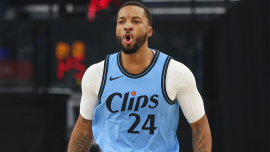
Bucks: C-
I’m less concerned with the long-term financial consequences of waiving-and-stretching Damian Lillard than most cap nerds. One of two things is going to happen with Myles Turner in place:
- The Bucks will be good enough to convince Giannis Antetokounmpo to stay. If so, well, having Giannis Antetokounmpo is generally good for business. Turner fits next to him like a glove as a 3-point shooting, rim-protecting center, but his mobility opens some doors that were closed to the slower Brook Lopez. If the Bucks contend in the near future, paying Lillard to go away will have been worth it.
- More likely, the Bucks will not be good enough to convince Antetokounmpo to stay. Still, in that environment, there’s still value in having Turner. They can trade for him good draft picks afterward, but honestly, he’s also a useful chip to have while trading Antetokounmpo because they fit together so well. Any team concerned about how it will be able to space the floor around Antetokounmpo could simply trade for Turner with him, and the Bucks, of course, could extract more out of that acquiring team in doing so. If the Bucks are bad and rebuilding in this post-Antetokounmpo period, well, that dead money just won’t mean much anyway.
The greater concern here is that the team just still isn’t very good. The last two times the Bucks went all-in for veteran additions, they got All-Stars in Lillard and Jrue Holiday. That’s not Turner. He’s a replacement for Lopez, someone they already had. Therefore, as of this writing, they haven’t adequately replaced the scoring they’ve lost without Lillard (and Khris Middleton for that matter). This is still probably only a play-in team. Maybe they nab Bradley Beal after a buyout. Maybe they put their 2031 or 2032 first-round pick in a trade with Kyle Kuzma for a significant addition. But they’re still far away from competing seriously.
And, given pressure Antetokounmpo is putting on them to build a winner, it’s worth wondering if it might have just made sense for the Bucks to decide for themselves that a trade made more sense. If Antetokounmpo gets hurt, that compromises his trade value. If he declines at all in his age-31 season, that compromises his trade value. With only one year left on his contract after this season, the field of viable trade partners narrows. He can control his destination, which in turn controls how much the Bucks can command as a return.
Obviously, no one in Milwaukee wants to trade Giannis. But part of running a team is having the self-awareness to make those hard decisions. The likeliest outcome here, without further moves we can’t yet foresee, is that another disappointing season disappointing season leads to Antetokounmpo’s exit when he becomes extension-eligible in a year, and the second likeliest outcome is that he extends out of loyalty but remains on a team without a serious chance to win a championship. Neither scenario is all that appealing. Pain is probably coming here, and the longer the Bucks wait, the worse it’s likely to be.
Let’s start with the good: the Bulls are finally negotiating! After consecutive offseasons in which they moved quickly and vastly outbid the market on Nikola Vučević and Patrick Williams, they’ve seemingly drawn a line in the sand with restricted free agent Josh Giddey, who reportedly wants a contract similar to the five-year, $150 million pact Jalen Suggs got from Orlando a year ago. Suggs is a better player than Giddey, though, and he has a clearer function in a postseason setting. Giddey has little leverage here, so it’s smart of Chicago to be patient here.
But the actual moves Chicago made? Those are more puzzling. At the very least, they likely could have turned Lonzo Ball into the No. 18 pick and Marcus Smart at the deadline last February, as Memphis would have preferred to get a good player back than to just cap dump Smart outright. Instead, they turn Ball into Isaac Okoro and no picks. Yet again, Chicago manages to turn a role player that could help any team into a prospect the league has largely soured on. Okoro will help Chicago defensively, but he overlaps with the incumbent forwards when it comes to his offensive vulnerabilities.
Also worth asking here: could the Bulls have made the draft-night trade that Atlanta made with New Orleans? After all, the Bulls took Noa Essengue at No. 12, but surely New Orleans checked in for fear of Chicago snatching Derik Queen, right? We don’t know for certain that the Bulls rejected the chance to get No. 23 and the unprotected future Pelicans/Bucks pick, but if they did, that’s almost as puzzling a decision as the one New Orleans made to give up that pick in the first place. The Bulls have been stuck on the treadmill of mediocrity for years. They never get high draft picks because they refuse to properly commit to a tank. Suddenly they have a chance to get such a pick and the potential franchise player that comes with it without tanking and they don’t even seize it? That’s disappointing, but considering where Chicago fell in February’s front office rankings, it wouldn’t exactly be surprising.
The three-year, $84.5 million Jakob Poeltl extension feels like an overpay. It keeps him in Toronto through his age-34 season, and the Raptors gave it to him two years before his free agency. Why? What was the urgency there? He’s coming off of his best offensive season, but his defense has slipped meaningfully since San Antonio. Why not see how next year goes before making such a commitment?
More to the point, Toronto’s cap sheet is pretty clogged. Though this can obviously change, the Raptors are currently several million dollars above the luxury tax for a roster with no clear All-Stars that hasn’t won a playoff series in five years. Virtually everyone here is getting paid at the absolute top of the market. The Pelicans spent the better part of a year trying to trade Brandon Ingram for good value. They got one bad first-round pick to do so. Yet Toronto gives him $120 million over three years? Immanuel Quickley will make nearly as much over the next four seasons ($130 million) as the superstar he backed up in New York, Jalen Brunson ($156.5 million). This is another team without a clear vision. They’re just sort of stacking decent players, overpaying them and seeing what happens. This offseason should have provided some long-term clarity. Instead, the Raptors accomplished very little.
nba,nba free agency,nba offseason,nba trades,nba trade rumors,NBA,Boston Celtics,Milwaukee Bucks,Los Angeles Lakers,Washington Wizards,Miami Heat,Atlanta Hawks,Cleveland Cavaliers,Brooklyn Nets,New Orleans Pelicans,Philadelphia 76ers,Chicago Bulls,Indiana Pacers,Golden State Warriors,New York Knicks,Phoenix Suns,Quentin Grimes,Detroit Pistons,Toronto Raptors,Charlotte Hornets,Orlando Magic,Jimmy Butler,Caris LeVert,Larry Nance Jr.,Malik Beasley,Ty Jerome,Al Horford,Jay Huff,Kevin Durant,Jordan Poole,Terry Rozier,Brook Lopez,Brandon Ingram,Chris Paul,Lonzo Ball,Luke Kornet,Denver Nuggets,Jrue Holiday,Kyle Kuzma,Myles Turner,Terance Mann,Marcus Smart,Guerschon Yabusele,Immanuel Quickley,Bradley Beal,Paul George,Khris Middleton,Haywood Highsmith,LeBron James,Jordan Clarkson,Nickeil Alexander-Walker,Kel’el Ware,Michael Porter Jr.,T.J. McConnell,Jalen Brunson,Pascal Siakam,Tyus Jones,Dyson Daniels,Dallas Mavericks,Trae Young,Jayson Tatum,Isaac Okoro,Paolo Banchero,Patrick Williams,Jonathan Kuminga,Pat Connaughton,Mark Williams,Derrick White,Trendon Watford,Franz Wagner,Zaccharie Risacher,Giannis Antetokounmpo,Derik Queen,Mitchell Robinson,Josh Giddey,Cade Cunningham,Luke Kennard,Noa Essengue,Collin Sexton,Anfernee Simons,Damian Lillard,Jaden Ivey,Onyeka Okongwu,Duncan Robinson,Jalen Suggs,Jaylen Brown,Jakob Poeltl,Bam Adebayo,Desmond Bane,Kon Knueppel,Tyler Herro,Ryan Kalkbrenner,Egor Demin,Tyrese Haliburton,Naz Reid,Cam Whitmore,Tre Johnson

